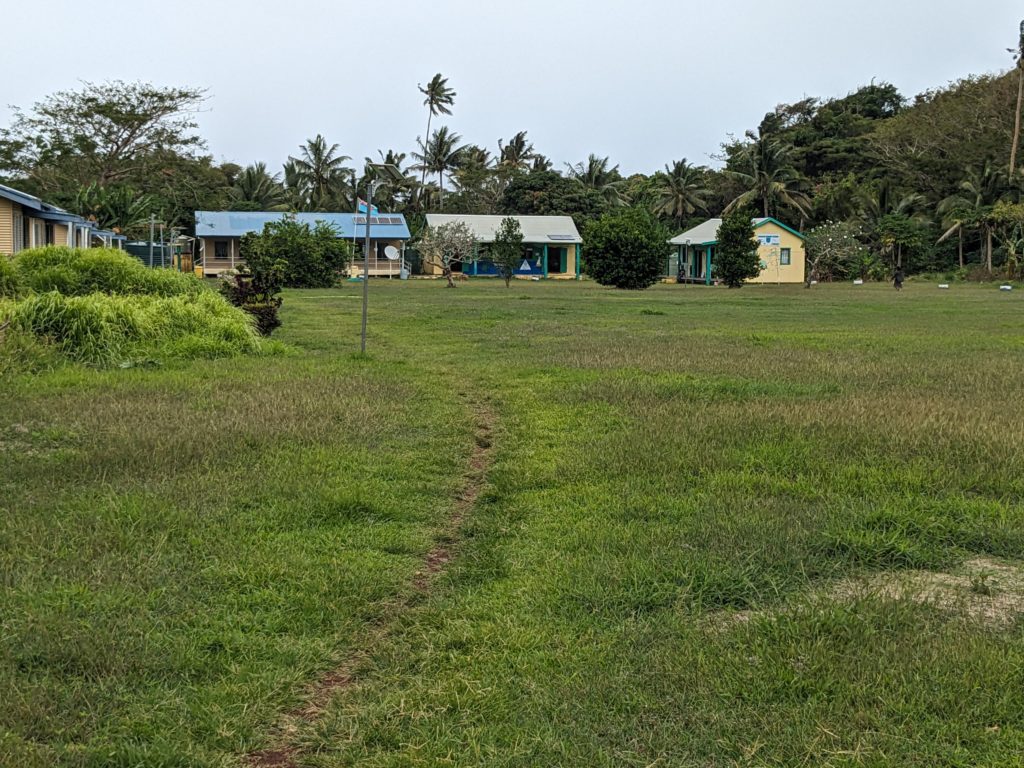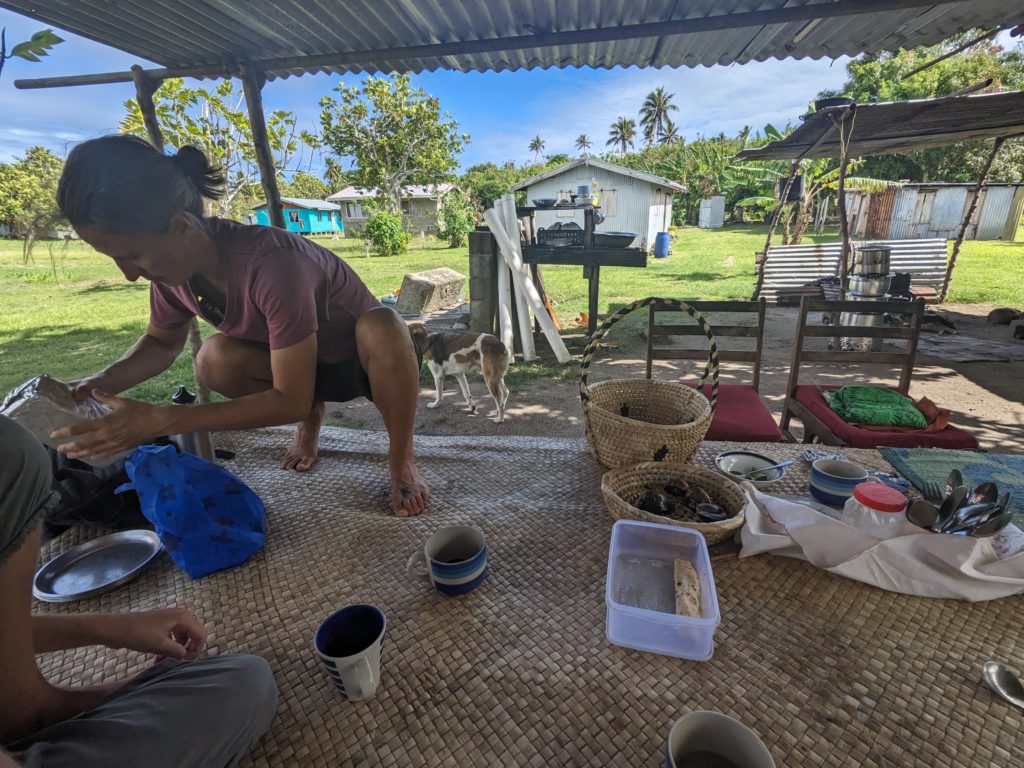Fruits of Fiji

“Bula!”
On a dirt road in the Fijian countryside, we all freeze. Where’d that come from? A bula must not go unacknowledged. There… waaaay over there, across a field, is a construction worker with his arm raised in greeting. “Bula!”, we shout back with a wave.
Fijians are the most salutationary people that we have encountered. We’ve received a bula out of dense jungle with no identifiable source to be seen. And a wild cheering bula from an entire busload of school kids. And 40 consecutive bulas from a line of people exiting a church service. Bulas from darkened doorways, and from distances that seem quite improbable by North American standards. It’s a very welcoming culture.
Fiji has over a hundred islands with full time populations, and over a thousand villages throughout the country. One can’t hope to experience everything, but I’ll try describe the different ways in which people gave us fruit.
Makogai: At Makogai Island we were welcomed ashore by a local man named David. His family had moved to this island in the early 1900s to work as staff at the leper colony, which was once home to a population of 1500. He toured us around the ruins of the abandoned hospital community, which once included a large theatre. The location is now used to farm giant clams. There were only maybe 50 people now living on the island in a sleepy village that was 50% school buildings. Before we left David collected and carved some drinking coconuts for us, and another local lady gifted us some papayas.



Levuka: The town of Levuka was originally a whaling port. The buildings all have false fronts like the old west, and many are in severe disrepair. They don’t see many tourists here, there’s a smelly fish plant smell and rainy weather, but we thought it was fascinating. While exploring the main drag a local man popped out to offer us water. We declined, but he then insisted that we take a pumpkin. This man didn’t have many teeth, and based purely on appearances looked like he could use the pumpkin more than us, but he was kindly insistent and we couldn’t say no to his generosity.

Yasawairara: This community in the northern Yasawas is a traditional chiefly village, nestled in paradise. No roads or services. Most homes had some solar for electricity. Two kids greeted us when we landed on the beach and lead us to Winnie, the functioning elder of the community at that time. We presented her with a gift of kava root, which is the custom, and she invited us to breakfast where she served coconut roti, cooked over a fire. It was delicious, and cool to see the Indian influence in indigenous cuisine.


Exploring this village in the afternoon a group of locals waved us over to join their picnic. They had a feast laid out, entirely of local produce. Fruit, fish, giant clam (very rubbery), drinking coconuts, etc. There are only a handful of paid jobs here, teacher, preacher, and not much else, but it appeared to be a rich life focused around gathering food and community. The village itself still had many buildings in disrepair since hurricane Winston in 2019.


Blue Lagoon: At Nanuya Lailai island we anchored near the filming location of The Blue Lagoon. There is a resort here, as well as a small village. Resorts need staff and remote villages have limited employment opportunity, so it was common to see a resort/village symbiosis.
A man from the village kayaked to our boat one day offering to sell a bunch of bananas. The bunch was six feet long with hundreds of bananas, which seemed too ambitious for us. He then asked if we could spare any kids clothes for the village. We did have some which we happily donated. Then he asked if he could have our kayak. Our best guess is that some boat donated a kayak at some point, so now he makes sure to ask just in case. The disparity in material wealth between a cruising boat and a remote villager is huge. We had to disappoint him with the kayak request, but before he left he gifted us a few papayas.

Along with welcoming and generous people, Fiji has bustling cities and exotic resorts. It has whole islands purchased by other nations, to house people displaced by environmental issues. It has a large Indo Fijian population, descended from indentured labourers imported by the British. The Indian influence makes for some delicious foods and a fascinating culture.
Next stop: New Zealand!
and some photos…













4 thoughts on “Fruits of Fiji”
BULA! Love the update, thanks! Very interesting update from Fiji, as you got to experience more of it that we did. Boat looks in ship shape again with that cleanup and paint!
Bula!
So the Timelapse of Mandolyn being moved onto the hard was super cool – and almost comical seeing the giant lift skittering away like some big working robot from Wall-E lol!
Great pics from Fiji!
Have you noticed the kids are bigger in these pictures than when you first left Canada?? Wow…
Can’t wait to hear about your adventures in Middle Earth! Keep an eye out for hobbitses!
Fair winds!
Richard
Love Nyah’s costume! That water slide looks epic. Good work explorers!
Great post! Impressive shell art!! Thanks for the update – thought you were lost at sea!! xoxo
Comments are closed.